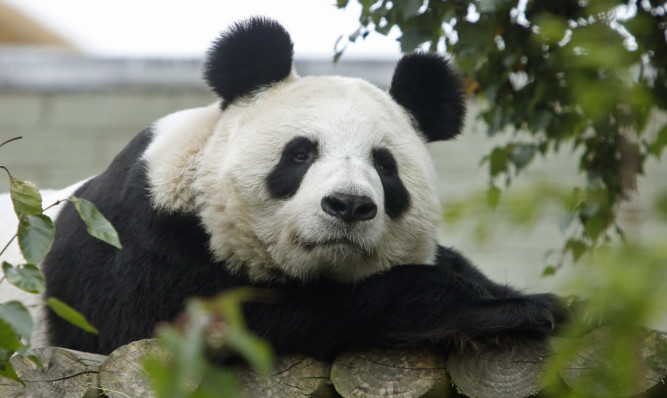The UK’s giant pandas are helping scientists unravel the mysteries of the species’ diet – by donating their poo to research.
Pandas are thought to consume as many as 60 varieties of bamboo and may also feed on other plant species, fungi and animals.
Experts believe a better understanding of exactly what they eat could help efforts to manage and conserve wild panda populations.
Edinburgh Zoo residents Tian Tian and Yang Guang will assist by providing “scat” that will be used to develop DNA techniques for examining samples from the wild.
Telling different species of digested bamboo apart has proved difficult for scientists in the past.
Dr Linda Neaves, head of the team at Royal Botanic Garden Edinburgh (RBGE) carrying out the study, said: “Next generation sequencing technologies will be used to investigate the DNA contained in panda scats to identify exactly what has been eaten and even which panda has eaten it.
“These methods have the potential to overcome many of the problems that have been restricting our understanding and allow us to investigate and quantify the extent of variation in diet and contributing factors such as sex, season and availability.
“We will also be using these methods to help identify different species of bamboo in panda habitat and determine how that relates to diet. This information will help refine understanding of giant panda habitat now and how it might change in the future.”
Tian Tian (Sweetie) and Yang Guang (Sunshine) have been on loan from China since 2011.
Last year, cells were taken from their cheeks to assist research into some of the deadly diseases which threaten the vulnerable species.
The latest study by RBGE, in collaboration with the Royal Zoological Society of Scotland (RZSS), has been awarded £250,000 from the Leverhulme Trust.
RZSS director of giant pandas Iain Valentine said: “RZSS is currently undertaking or facilitating a huge variety of giant panda conservation projects in Scotland, around the UK and globally.
“These projects will make substantial collective contributions to the future of the giant panda both in captivity and in the wild.”
